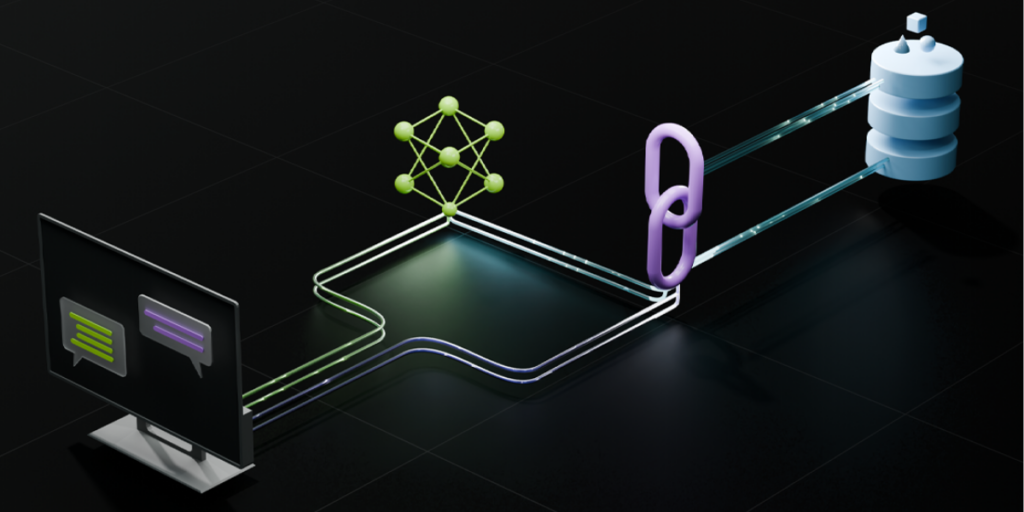Imagine a world where your business can anticipate future trends in the market, tailor customers’ experience with a precision that makes the valley of unimaginable size appear to be just a tiny bump, and also lead innovations in product design with a level of precision previously unimaginable.
With the help of generative AI, the future is here already.
This technology is helping lay the foundation for entirely new strategies and business ventures and has been hailed as a revolutionary technological breakthrough.
The global intelligent AI market is expanding exponentially. It’s currently at $44.89 billion and on track for significant growth across many sectors, including retail, insurance, banking, and marketing.
The next question is, will the Industrial Revolution be something that we are experiencing now? Is it just another incident in the business product lifecycle? This blog explores how AI is becoming the future of business innovation and what it means for the future of business.
What is Generative AI?
A robust Generative AI, or GenAI, typically employs machine learning to design and develop new content. It is essential to understand that machine learning is artificial intelligence that learns by studying data patterns before following human-led directions.
GenAI has much information frequently analyzed to offer AI application development solutions. Simply put, GenAI can determine things and then apply this knowledge to design new solutions.
In any case, just a few days after the explosive discovery of ChatGPT in 2022, everyone knew of commercial applications for GenAI. As of now, open AI users might consider GenAI models to be new. However, GenAI has many applications and benefits.
Types of Generative AI Models
There are many kinds of Generative AI commercial applications, each designed to perform specific purposes. This diversity means that this broader model of intelligent AI can be effectively utilized across different industries, applications, and companies.
Generative Adversarial Networks (GANs)
Generative Adversarial Networks, or GANs, are the original AI model, first introduced in 2014. Made up of two parts, a generator, and a discriminator, GANs achieve a high success rate in creating real-world content and identifying applications like cybersecurity, art creation, and data synthesis that are successful in AI training.
Large Language Models or LLM
Large Language Models (LLMs) are significant generative AI models that have proven their efficacy in Natural Language Processing (NLP). LLM can be classified in Google’s GPT and OpenAI’s BERT-like groups. Training on large amounts of text data, these models, used by generative AI apps, efficiently carry out tasks like translating data, summarizing it, and creating text that resembles humans.
Diffusion Models
Diffusion models are innovations in dynamic AI models that have demonstrated their ability to produce quality images and videos. In contrast to traditional techniques, diffusion models improve the quality of images and videos by adjusting the probabilities of the pixels to be distributed.
Their application in photorealistic rendering, digital art creation, fashion design, and medical imaging are growing daily.
Variational Autoencoders (VAEs)
Variational Autoencoders (VAEs) combine elements of probabilistic models and autoencoders. They provide the input data in a straightforward format and then develop novel and exciting data models based on that format and presentation.
Apart from producing outputs, this algorithm can perform important tasks such as data augmentation, image generation, and anomaly detection.
Transformer-based Models
Generative AI’s system is based on natural machine learning and language processing. It can translate texts, retrieve language-related data, and more.
If you can pick the ideal model to use in your Generative AI solution, it will help you stand out from the crowd.
Benefits of Generative AI Seamless Team Integration
Commercial leaders have a once-in-a-generation chance to enhance a wide variety of their processes on an enormous scale. Companies are already relying on Generative AI tools to generate substantial savings and revenues, and this is just the beginning. Recognizing the most important areas where generative AI integration services can help sales, marketing, and customer service teams, which can transform the way you work.
Although the exact uses of Generative AI will be unique to each organization, There are significant ways this technology can support commercial projects:
Personalization and Engagement
Generative AI improves the output capacity of content, improving teams’ capacity to provide personalized content. Targeted marketing campaigns can boost customer satisfaction.
Automation
Automation with generative AI integration can completely automate many repetitive and mundane tasks. This frees sales, marketing, and customer service teams to concentrate on tasks that bring more value and reduce data entry mistakes.
Data-Driven Insights
Generative AI swiftly analyzes large data sets and reveals patterns and trends that may guide future business decision-making. The research that used to take months to complete can now be completed in a matter of only a few minutes.
Innovation and Creativity
Generative AI generates new ideas with each new request. Every commercial team benefits from this well-stocked reservoir of innovative ideas.
If you consider those strengths in terms of future strategic potential, executives can see opportunities to utilize Generative AI tools on a team-by-team basis.
Challenges of Using Generative AI
Although Generative AI has great potential in remote team members, its use is not without issues that require careful consideration:
Technical Infrastructure
Generative AI models are computationally costly to run and require substantial resources. They generally also need vast quantities of data to train, and it can be time-consuming to gather, collect tags, structure, and organize to ensure that the AI can use it. The seamless integration into Generative AI tools with existing workflow management and communication platforms is crucial for the smooth implementation and a positive user experience.
Data Privacy and Security
Alongside the data needed to train, teams supply potentially sensitive company information to the AI to receive the desired results. The information, in addition to the results that the AI produces, should be protected during transport and storage. Robust security measures are required to guard AI devices from cybercriminals’ attacks and insecure access.
Data Quality and Availability
Data quality and accessibility are essential for the development of efficient AI models. Access to high-quality and diverse data is a challenge, particularly for smaller companies or sectors.
Training and Adaptation
Employees who prefer traditional methods of working can face any new technology introduced. Addressing concerns, offering adequate education, and highlighting advantages are essential to a successful adoption. Remote teams may require instruction in using technology, interpreting results, and collaborating effectively using AI assistance.
Ethics and Bias
The application of Generative AI in remote work raises ethical questions about the privacy of data transparency of algorithms and the possibility of automating jobs. Discussing these issues openly and setting ethical guidelines regarding AI use is vital. AI models are prone to acquiring biases and unjustness from the data they’re training on. This can be a problem when working in remote locations where various languages and cultural backgrounds are in play. It is crucial to reduce bias and ensure the same results for everyone on the team.
Quality Control and Oversight
Due to Generative AI’s complexity, maintaining human oversight and the supervision of AI outputs, especially in sensitive areas such as decision-making, remains a technological problem. It’s also essential to determine the ideal balance between AI and human collaboration to ensure human judgment is kept within the loop while maximizing AI’s efficiency.
Cost and ROI Consideration
Maintaining and implementing Generative AI infrastructure can be costly and requires constant technical knowledge. The right balance between value creation and investment is crucial. Because of the high computing demands, small businesses can face difficulties finding and maintaining the required technology and skills.
Generative AI for Team Integration: Step-by-Step Process
This step-by-step tutorial will show you how to integrate Generative AI technology into team processes, improving customer experience and operational efficiency.
Conduct a Thorough Audit of Your Marketing and Sales Activities
Incorporating Generative AI in your sales and marketing processes requires an in-depth analysis of your current technology environment. Take a look at:
- Infrastructure: Begin by extensively analyzing your current technology infrastructure for sales and marketing. Review your capabilities and limitations and the compatibility between your existing systems. Determine areas for improvement and how Generative AI can seamlessly integrate to improve the efficiency of your operations.
- Talent: Similarly, evaluate the skills and knowledge of your employees in your workplace. Assess the skills and experience of the team members and determine the areas where further training or recruitment could be helpful. A thorough understanding of your internal capabilities will ensure the smoothest integration and make the most efficient of the existing expertise.
This audit will form the foundation of your decision-making process, allowing you to think strategically about the need to consider open-source solutions (which allow for customization and flexibility alternatives) as well as low-code options (which simplify the development process, allowing even those with no experience in coding to contribute efficiently).
Exploring a variety of technologies and having an idea of what you need to do will allow your company to make informed choices about the best approach to incorporating Generative AI into critical use scenarios.
Form a Dedicated Generative AI Task Force
Setting up an eminent Generative AI task team is crucial to ensuring the integration process is successfully completed. Realizing the critical aspects of structure and accountability in any undertaking, creating an all-functional squad is vital. This team should include people with expertise from the sales, marketing, and IT departments.
The motivation behind forming cross-functional teams is rooted in the multi-faceted character of Generative AI applications. When you bring together experts from different fields, you can tap into the wealth of experience and perspectives. Marketing experts can offer insights on strategies to engage customers. Sales professionals can provide insights into leading generation and conversion, and IT experts can offer their technical knowledge to facilitate seamless integration.
The task force is the primary driver in investigating possible solutions and studying the practicality of using Generative AI in various commercial applications. Their collective knowledge and cooperation provide a thorough understanding of how Generative AI can be effectively utilized to solve specific issues and opportunities in the sales and marketing areas.
Furthermore, the cross-functional approach helps ensure that integration is in line with the organization’s overall goals. It helps improve communication between departments, breaking down barriers and encouraging a collaborative atmosphere. This synergy is vital to identifying potential roadblocks early on and developing well-rounded solutions to meet each department’s different requirements.
Create Use Cases and Objectives According to the Consumer’s Needs
The journey to Conversational Artificial Intelligence requires a thoughtful method based on specific goals and customized applications that are in tune with the needs of consumers. Before diving into the realm of Generative AI, clearly identifying your goals is essential. Find specific areas in your company in which AI could have the most impact, whether that’s simplifying customer support, creating leads, or increasing the level of engagement with your customers.
- Objective Definition: Are you looking to increase customer satisfaction, increase the conversion rate of leads, or enhance user interactions? Each goal demands a different method, and clearly stating these goals will set the tone for an effective and focused generative AI integration.
- Making Use Cases Tailored to your Needs: After objectives and a plan are established, it is time to pinpoint specific use cases that match the business requirements. Customizing your AI system to meet the particular scenarios you’re looking for ensures it’s not simply a novelty but a solution tailored to your business’s specific requirements. Whether it’s automating repetitive customer inquiries or customizing user experiences, every use case will directly contribute to achieving your goals.
- Learning Your Audience: Generative AI’s effectiveness depends on its capability to connect with users. Understanding your target audience in detail is essential for effective integration. A thorough study of their preferences, specific language preferences, and communication styles can provide valuable insight. Understanding common user questions or concerns allows you to develop a natural conversational structure that perfectly meets customers’ expectations.
Provide Basic Generative AI Training
Don’t miss the vital step of providing your work team with the necessary training to motivate them and give them a better understanding of the possible applications of Generative AI.
Beyond the technical aspect, the sessions are crucial in establishing a shared vision for the team. The exposure to real-world examples and successful stories inspires and encourages a positive outlook within the team. The objective is to motivate the team members to think of creative solutions and try out their hands using Generative AI in the context of your company.
As team members begin to comprehend Generative AI’s capabilities and limitations, they’ll be more inclined to generate ideas, initiate tests, and investigate ways to tailor Generative AI to solve specific business issues.
In addition, these workshops aid in building an overall knowledge base within the company. This understanding of the collective becomes an invaluable resource when team members participate in cross-functional conversations, share knowledge, and work together in the integration process.
Identify Low-Hanging Fruit
Another vital aspect to consider is to find low-hanging fruit, which are easy, high-impact, efficient use cases that result in rapid results. These are the opportunities in your customer journey where using Generative AI could bring immediate advantages.
Tasks like capturing contact information, streamlining meetings before discovery, or improving lead scoring are prime examples. When you focus on these easy yet powerful applications, you can show the real benefits of Generative AI to your team and others and clear the way for more accessible and smoother integration.
When you’re done, introduce and test a few “guardrails” as part of the procedure. Guardrails are safety precautions that help reduce the risk of playing using new technologies. This could include:
- Limiting the extent of implementation
- Definition of clear and precise criteria to measure success;
- Implementing protocols to monitor;
- Modifying the integration as required
By carefully identifying and implementing low-hanging fruit and thoughtfully approaching guardrails, your company can increase confidence, demonstrate the immediate advantages of Generative AI, and lay the foundation for further and more sophisticated applications in the near future.
Choose the Right Platform or Framework
The selection of a suitable framework or platform is crucial. This choice will form the basis of your whole AI implementation plan and demands care to ensure a seamless and efficient integration.
It is crucial to ensure that the framework or platform meets your business’s specific goals. Take note of the broad goals you identified in the earlier steps. The platform you select should align with these goals and ensure that the integration not only meets the immediate requirements but also prepares your company for growth in the future and flexibility.
Ensuring the system is compatible with your technological requirements is equally important. Remember to refer back to the inspection of the tech infrastructure, focusing on aspects like compatibility, scalability, and ease of integration with your existing systems. The best platform for you will easily integrate into your current technology stack, increasing efficiency while minimizing disruptions during integration.
Choosing the appropriate framework or platform is a delicate balance, considering your company’s specific objectives and the technological environment in which it operates. When you make a deliberate and well-informed choice, you can lay the foundation for an effective Generative AI integration that aligns with your vision for the future and creates the conditions for ongoing development.
Establish Generative AI Guidelines for Your Sales Team
If Generative AI becomes an integral element of sales operations, developing specific and thorough guidelines is imperative to ensure ethical and responsible usage. By taking strict preventive measures, you can protect against possible privacy breaches and reinforce the need for safeguarding customer data. By drawing strict boundaries around the types of data that may be processed, businesses can instill confidence in their customers and ensure that sensitive information is safe throughout the selling process using AI.
In addition, maintaining a high-quality level of verification for outputs is crucial, mainly when the created content is for external consumption. Implementing strict quality control measures is essential to determining the quality, relevancy, and adequacy. This will ensure that the information reflects the organization’s values and message and minimize the possibility of disseminating incorrect or false information.
If they adhere to these rules, companies can build confidence internally within the sales team and externally with customers, creating an ethical and responsible generative AI integration process.
Run a Generative AI Experiment
The process of running a Generative AI test is an essential measure to determine its efficiency and identify areas for improvement. Begin by choosing one specific part of the sales process, focusing on the top of the funnel. This method of concentrating allows for an environment for controlled testing, which allows for an in-depth examination of the impact of AI on lead generation’s first interactions with customers or even creating content at the beginning stages of the selling process.
Throughout the study, constant analysis of the outcomes is crucial. Review essential performance indicators like the rate of engagement and lead conversion rates, as well as the relevancy of the content, to determine the effectiveness of AI in the specific use cases. Also, resolve any issues or weaknesses that could be discovered during the research. This feedback loop is crucial and serves as the basis for refining this Generative AI process, addressing challenges, and improving its performance to implement it throughout the sales cycle.
Connect to Existing Systems
A seamless integration with your existing databases, systems, and APIs is crucial for implementing Generative AI within your business operations. This is where the task force’s IT personnel assume the leadership role, as it is about aligning the latest AI abilities with the existing technology infrastructure, ensuring they are compatible, and ensuring a seamless data flow.
Integrating existing systems, such as integration with established systems, such as Customer Relationship Management (CRM) platforms and tools for customer support, helps businesses improve the overall efficiency of their operating environment. This integration enhances the effectiveness of data handling and provides a more comprehensive way of handling customer communications, using the existing systems’ data to enhance those AI-driven processes.
Additionally, integration with relevant platforms expands the scope and impact of Generative AI across various facets of business. Whether streamlining customer interaction and support processes or improving the quality of data-driven decisions, this ensures that AI implementation is part of the wider ecosystem. The synergy created through integration enables businesses to get the maximum benefit from their current technological investments while also opening new opportunities to improve efficiency and innovation.
Testing and Quality Assurance
Following that is rigorous testing and quality control. It is crucial to identify and resolve possible issues that might arise in the course of operation. This test phase analyzes the AI system’s response to a variety of inputs and ensures that it can handle an array of situations efficiently. From basic user inquiries to dealing with extreme cases, the test process is designed to verify the accuracy, reliability, and overall performance.
Testing is a crucial aspect of:
- evaluating the system’s fast response time to inputs from users;
- Assessing its capacity to sustain constant performance under different demands;
- Identifying any possible weaknesses or bottlenecks.
- The aim is to provide users with a smooth experience, where the AI system works effectively and reliably across a variety of situations of use. Testing thoroughly enhances this Generative AI system’s robustness and gives confidence in its capability to meet users’ expectations and operational demands.
User Feedback and Iteration
Feedback from users is crucial to developing and improving this Generative AI chatbot. Feedback collected during and following the initial rollout can provide essential insights into the user’s experience preferences, as well as potential areas of improvement. This process makes businesses aware of the ever-changing needs of their internal and external stakeholders and customers. By analyzing user feedback, you can aid in identifying any issues and ensure that chatbots can be modified to meet the expectations of users and business goals.
Constant iteration using user-generated insights can improve customer experience and set your company up to maximize the potential of Generative AI in addressing changing requirements and ensuring that you stay ahead of the ever-changing landscape of markets.
Monitoring and Maintenance
Utilizing powerful monitoring tools will enable you to monitor the chatbot’s performance, detect any anomalies or deviations from what you expect, and collect data for continual improvement. This proactive approach means that you’re able to identify any issues and fix these issues quickly, which contributes to the smooth and effective user experience.
Regular maintenance and updates are essential to adapt Generative AI technology to evolving patterns of behavior and evolving business needs. As user expectations shift and business dynamics change, updating the system will ensure its effectiveness and relevance. This involves not just fixing the issues identified but also incorporating improvements and new features that meet new demands.
When you focus on continuous surveillance and maintenance, you’ll be able to increase the lifespan and efficiency of the Generative AI bot by staying responsive in a constantly evolving technological environment.
Conclusion
The latest tech trends can be temporary, but there’s an impression that generative AI has established its place in the digital world with greater vigor than Google+ or the Facebook phone has ever achieved.
Integrating these technologies into your company’s framework could lead to new strategies to ensure your products remain competitive in an ever-changing market.
Generative AI development is at the forefront of innovation regardless of industry boundaries. Think of it as the Industrial Revolution and this Revolution 2.0 promises to revolutionize how we conduct business and markets.
As technology adoption increases, new industries will emerge from this technology boom. At A3Logics, we’re not looking forward to the next day. We’ve already begun to embrace what seems to be the upcoming chapter.








